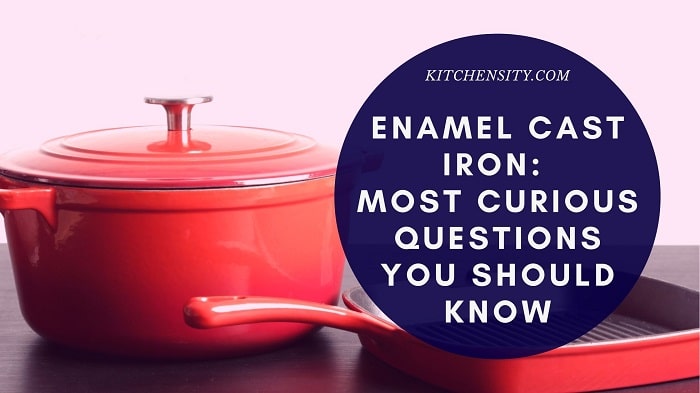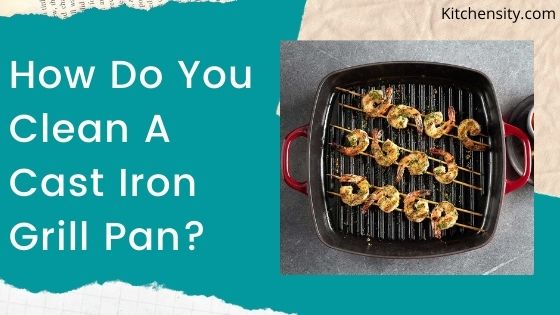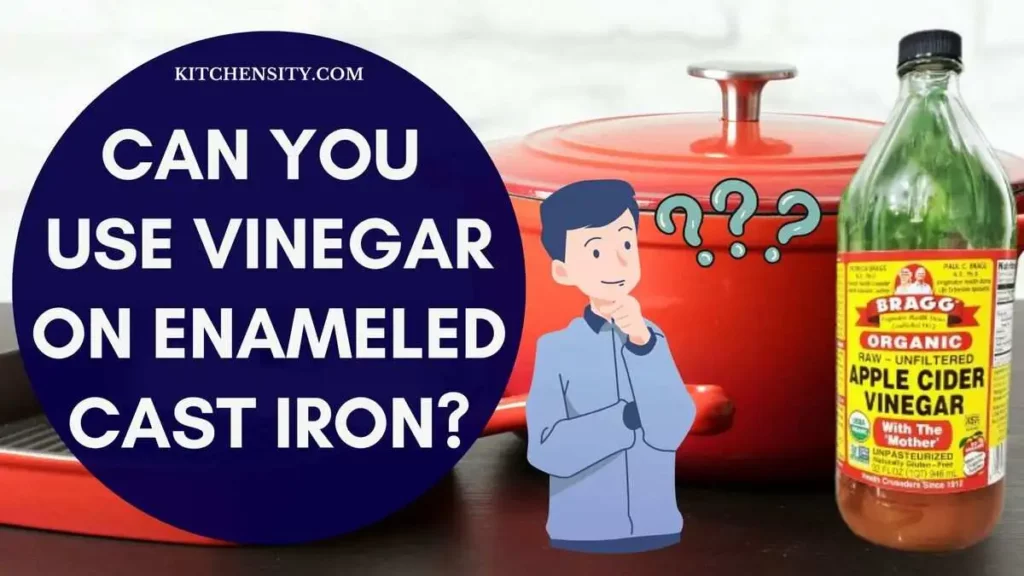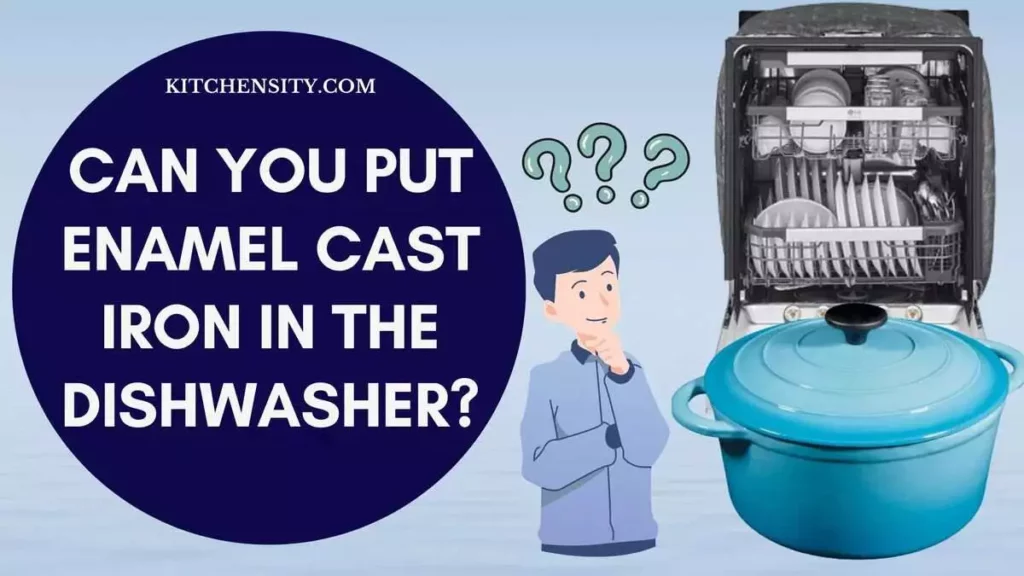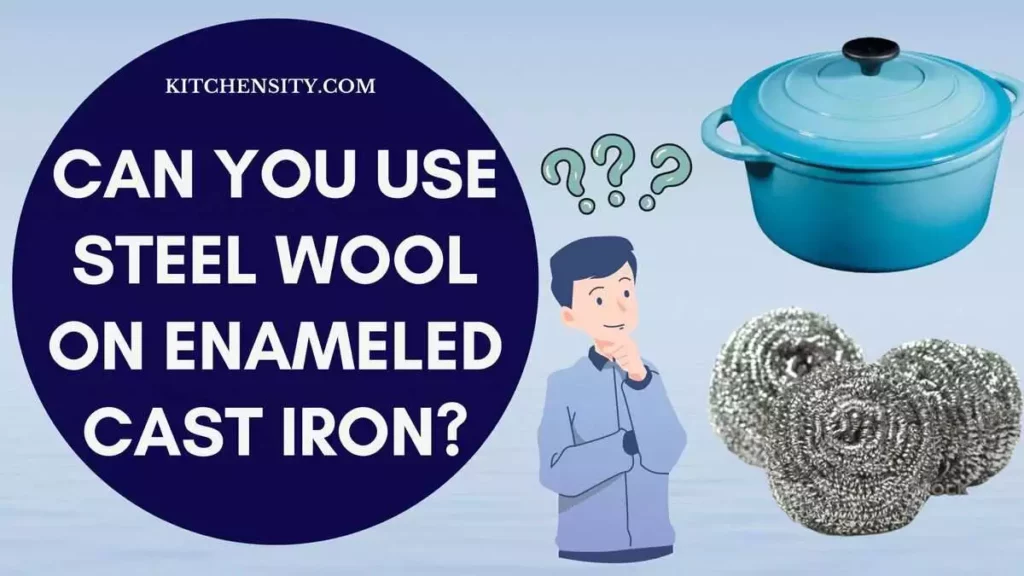Cast iron pans are widely cherished for their durability and excellent heat retention properties. These versatile kitchen tools have been used for generations and are favored by both professional chefs and home cooks.
However, one common issue that can arise with cast iron pans is cracking.
In this article, we will explore the various reasons why cast iron pans can crack, shedding light on factors such as thermal shock, overheating, physical damage, and maintenance practices.
By understanding the causes, you can take preventive measures to preserve the longevity and functionality of your beloved cast iron cookware.
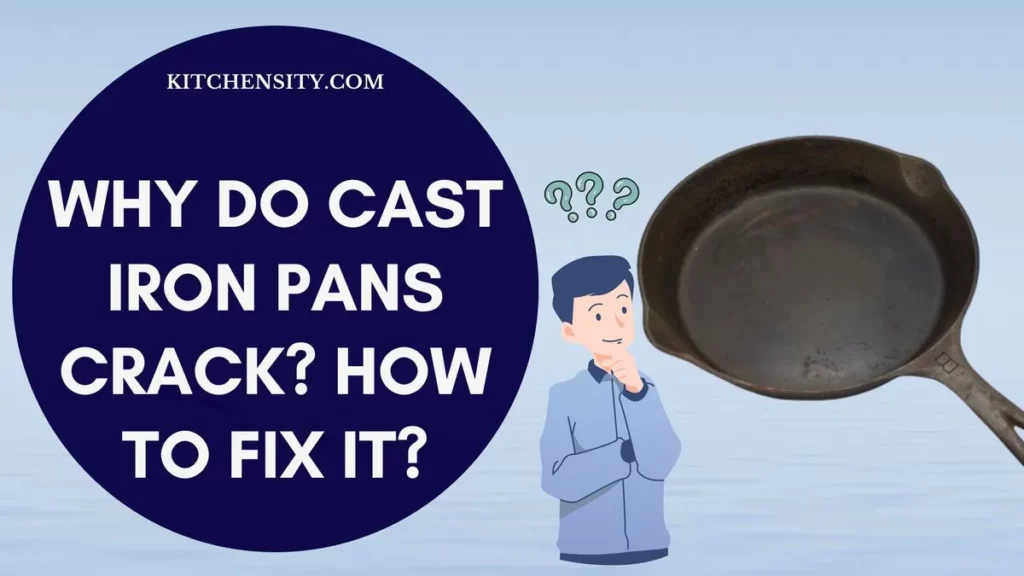
Table of Contents
- 1 Why Do Cast Iron Pans Crack?
- 2 What Makes Cast Iron Pans Unique?
- 3 How To Tell If Cast Iron Is Cracked?
- 4 The Factors Behind Cracking Of Cast Iron Skillets
- 5 How To Prevent Cracks in Cast Iron Pans?
- 6 How To Fix Cracked Cast Iron Pans?
- 7 How To Repair Hairline Crack In Cast Iron Skillet?
- 8 Conclusion
- 9 YOU MAY ALSO LIKE
- 10 FAQs (Frequently Asked Questions)
- 10.1 What To Do With Cracked Cast Iron?
- 10.2 What Temp Does Cast Iron Crack?
- 10.3 Can I Use Soap To Clean My Cast Iron Pan?
- 10.4 Is It Normal For My Cast Iron Pan To Develop Rust?
- 10.5 Can I Use My Cast Iron Pan On An Induction Cooktop?
- 10.6 Can I Put My Hot Cast Iron Pan Directly Into The Sink For Washing?
- 10.7 How Often Should I Reseason My Cast Iron Pan?
Why Do Cast Iron Pans Crack?
Cast iron pans can crack due to factors such as thermal shock caused by sudden temperature changes, overheating beyond their limits, physical damage from dropping or banging, and inadequate maintenance and seasoning. These factors weaken the structural integrity of the pan, leading to cracks.
Also Read – is enameled cast iron cookware safe?
What Makes Cast Iron Pans Unique?
Cast iron pans possess unique characteristics that set them apart from other types of cookware. Here are some of the key features that make cast iron pans unique:
- Exceptional Heat Retention: Cast iron has excellent heat retention properties, allowing it to distribute heat evenly across the cooking surface. This ensures consistent and thorough cooking, making it ideal for searing, browning, and achieving delicious caramelization.
- Versatility: Cast iron pans can be used on various heat sources, including stovetops, ovens, grills, and even campfires. Their versatility allows for a wide range of cooking techniques, from frying and sautéing to baking and roasting.
- Durability And Longevity: Cast iron is renowned for its durability and longevity. When properly cared for, cast iron pans can last for generations, making them a worthwhile investment in your kitchen.
- Natural Non-Stick Surface: With proper seasoning and maintenance, cast iron develops a natural non-stick surface. Over time, this seasoning forms a smooth patina that enhances the pan’s non-stick properties, reducing the need for excessive oil or butter during cooking.
- Adds Iron To Food: Cooking with cast iron pans can contribute a small amount of iron to your food, which can be beneficial for individuals with iron deficiencies.
- Enhances Flavors: Cast iron pans can enhance the flavors of the food being cooked. They can impart a unique depth and richness to dishes, adding a distinct taste that is often sought after by culinary enthusiasts.
- Retains History And Nostalgia: Cast iron pans hold a sense of tradition and nostalgia, often passed down through generations. They carry a historical significance and evoke a connection to the past, making them cherished heirlooms in many families.
Overall, the exceptional heat retention, versatility, durability, natural non-stick surface, flavor-enhancing qualities, and sentimental value make cast iron pans truly unique and beloved by home cooks and professional chefs alike.
Also Read – Why Griswold Cast Iron Is So Expensive?
How To Tell If Cast Iron Is Cracked?
To determine if a cast iron pan is cracked, you can follow these steps:
- Visual Inspection: Carefully examine the surface of the cast iron pan, both on the interior and exterior, for any visible cracks. Look for any lines or gaps in the metal that indicate a potential crack. Pay close attention to areas where cracks are more likely to occur, such as the handle attachment or the rim of the pan.
- Run Your Fingers: Gently run your fingers along the surface of the cast iron pan, feeling for any irregularities or raised areas that might indicate a crack. Cracks can sometimes be subtle, so it’s essential to be thorough in your examination.
- Listen For Sounds: Tap the cast iron pan lightly with your knuckles or a utensil while holding it close to your ear. Listen for any dull or hollow sounds that could indicate a crack. A cracked pan may produce a different sound compared to a solid pan when tapped.
- Check For Movement: Hold the pan firmly and apply slight pressure to different areas, particularly where you suspect a crack might be present. If you feel any movement or flexing of the pan that is not normal for cast iron, it could be an indication of a crack.
- Perform A Water Test: Fill the cast iron pan with water, ensuring that it covers the entire surface. Leave the pan for a few minutes and then check for any water leakage. If you notice water seeping through the pan or pooling in specific areas, it suggests the presence of a crack.
It’s important to note that some cast iron pans may develop hairline cracks over time due to regular use or thermal stress, which might not significantly affect their performance.
However, more extensive cracks can compromise the integrity of the pan and may require repair or replacement.
Also Read – Can You Use Olive Oil To Season Cast Iron Pans?
The Factors Behind Cracking Of Cast Iron Skillets
- Thermal Shock: One of the primary reasons for cast iron pans to crack is thermal shock. Thermal shock occurs when there is a sudden and drastic change in temperature, causing the material to expand or contract rapidly. This can lead to stress and ultimately result in cracks.
- Rapid Temperature Changes: Subjecting a cast iron pan to rapid temperature changes can also cause cracks. For instance, pouring cold water on a hot pan or placing a hot pan directly under cold running water can create a thermal shock that weakens the material.
- Poor Maintenance: Improper maintenance of cast iron pans can contribute to cracking. Neglecting to dry the pan thoroughly after washing or storing it in a damp environment can lead to rust formation. Rust weakens the structure of the pan, making it more susceptible to cracks.
- Overheating: Excessive heat can cause cast iron pans to crack. Placing an empty pan on high heat for an extended period or allowing the pan to heat beyond its recommended temperature limits can lead to structural damage.
- Impact and Physical Damage: Accidental drops or impacts can cause cast iron pans to crack. It’s essential to handle these pans with care, as a significant impact can weaken the material and create fractures.
Also Read – Do You Need To Season Enameled Cast Iron?
How To Prevent Cracks in Cast Iron Pans?
- Gradual Heating And Cooling: To prevent thermal shock, it’s crucial to heat and cool cast iron pans gradually. When heating the pan, start with low to medium heat and allow it to preheat gradually. Similarly, when you finish cooking, allow the pan to cool naturally before cleaning or storing.
- Proper Cleaning And Seasoning:
- Regular cleaning and seasoning are vital for maintaining the integrity of cast iron pans.
- After use, clean the pan with mild dish soap and warm water.
- Avoid using harsh abrasives that can damage the seasoned surface. After cleaning, thoroughly dry the pan to prevent rust formation.
- To maintain the non-stick surface, apply a thin layer of oil and heat the pan for a few minutes.
- Avoiding Extreme Temperatures: Avoid subjecting your cast iron pan to extreme temperatures. While cast iron is highly heat-resistant, it’s best to avoid exposing it to sudden temperature changes or extreme heat levels. This will help preserve the pan’s structural integrity.
- Handling With Care: Handle cast iron pans with care to prevent physical damage. Avoid dropping or banging the pan against hard surfaces, as this can create cracks or fractures.
- Regular Maintenance: Regularly inspect your cast iron pan for any signs of damage, such as rust or hairline cracks. Perform routine maintenance by reseasoning the pan as needed. By taking proactive steps, you can extend the lifespan of your cast iron pan and minimize the risk of cracks.
Also Read – Can You Use Enameled Cast Iron On A Glass Cooktop?
How To Fix Cracked Cast Iron Pans?
Fixing a cracked cast iron pan can be a challenging task, but it is possible depending on the severity of the crack. Here are some steps you can take to repair a cracked cast iron pan:
- Assess The Crack: Examine the crack carefully to determine its size and location. If it’s a small hairline crack, it may be easier to fix compared to a larger or more extensive crack.
- Clean The Pan: Thoroughly clean the cracked area of the cast iron pan. Use mild dish soap and warm water to remove any grease, dirt, or debris. Rinse it thoroughly and dry it completely.
- Preheat The Oven: Preheat your oven to a temperature between 300°F (150°C) and 400°F (200°C). Make sure the oven is well-ventilated.
- Apply Repair Paste Or Epoxy:
- There are specific cast iron repair pastes or epoxies available in the market that are designed to withstand high temperatures.
- Apply the repair paste or epoxy to the cracked area according to the manufacturer’s instructions.
- Use a small brush or applicator to ensure even coverage.
- Be careful not to apply too much, as excess material can cause uneven heating.
- Wipe-Off Excess Repair Material: After applying the repair paste or epoxy, use a clean cloth or paper towel to wipe off any excess material from the surface of the pan. This will help ensure a smoother finish.
- Bake In The Oven: Place the repaired cast iron pan in the preheated oven. Bake it for a specific duration as recommended by the manufacturer of the repair paste or epoxy. Typically, this process involves baking the pan for around 1 to 2 hours to cure the repair material.
- Cool And Season:
- Once the baking time is complete, carefully remove the pan from the oven and let it cool completely.
- After cooling, you’ll need to reseason the pan to restore its non-stick properties.
- Apply a thin layer of oil to the entire surface of the pan, including the repaired area, and bake it in the oven at a high temperature (around 400°F or 200°C) for about an hour. This will help create a protective seasoning layer.
- Repeat If Necessary: Depending on the severity of the crack and the effectiveness of the repair, you may need to repeat the process if the crack reappears or if the repair is not satisfactory. In some cases, it may be best to retire the pan and invest in a new one if the crack is too extensive or poses a safety risk.
Remember, fixing a cracked cast iron pan is not always a guaranteed solution, and the success of the repair depends on various factors.
If you’re unsure about the repair process or if the crack is significant, it’s recommended to seek professional assistance or consider replacing the pan.
Also Read – Can You Put Enamel Cast Iron In The Dishwasher?
How To Repair Hairline Crack In Cast Iron Skillet?
Repairing a hairline crack in a cast iron skillet is possible and can help extend the lifespan of your cookware. Here’s a step-by-step guide on how to repair a hairline crack:
- Clean The Area: Start by thoroughly cleaning the cracked area of the cast iron skillet. Use mild dish soap and warm water to remove any dirt or debris. Rinse it well and dry it completely.
- Prepare The Repair Paste: Obtain a cast iron repair paste specifically designed for high-temperature applications. These repair pastes are typically made of a mixture of cast iron powder and heat-resistant adhesive. Follow the manufacturer’s instructions to prepare the repair paste.
- Apply The Repair Paste: Use a small brush or applicator to carefully apply a thin layer of repair paste to the hairline crack. Ensure that the paste covers the entire crack evenly. Avoid applying too much paste, as excess material can result in an uneven finish.
- Wipe-Off Excess Paste: After applying the repair paste, use a clean cloth or paper towel to wipe off any excess paste from the surface of the skillet. This will help achieve a smoother finish.
- Curing Process: Allow the repair paste to cure according to the manufacturer’s instructions. Typically, this involves air drying the skillet for a specified duration or baking it in the oven at a low temperature. Follow the recommended curing method to ensure the repair paste sets properly.
- Season The Skillet:
- Once the repair paste has cured, you’ll need to reseason the skillet to restore its non-stick properties.
- Apply a thin layer of cooking oil to the entire surface of the skillet, including the repaired area.
- Heat the skillet on a stovetop or in the oven at a moderate temperature for a short duration to help the oil polymerize and create a protective seasoning layer.
- Repeat If Necessary: Depending on the effectiveness of the repair and the visibility of the crack, you may need to repeat the process if the crack reappears or if you’re not satisfied with the repair. Keep in mind that hairline cracks may be challenging to repair permanently, and the success of the repair can vary.
It’s important to note that while repairing a hairline crack can help prevent it from expanding, it doesn’t guarantee complete restoration of the skillet’s original strength.
It’s always advisable to monitor the repaired area and handle the skillet with care to avoid further damage.
If you’re uncertain about repairing the hairline crack yourself or if the crack worsens, it’s recommended to consult a professional or consider replacing the skillet to ensure your safety and cooking experience.
Also Read – Can You Use Vinegar On Enameled Cast Iron?
Conclusion
Cast iron pans are prone to cracking due to factors such as thermal shock, rapid temperature changes, poor maintenance, overheating, and physical damage.
However, by understanding these causes and taking preventative measures, you can enjoy the benefits of cast iron cooking without worrying about cracks.
Remember to gradually heat and cool the pan, maintain it properly, avoid extreme temperatures, handle it with care, and perform regular maintenance.
By following these guidelines, you can keep your cast iron pan in excellent condition for years to come.
YOU MAY ALSO LIKE
- Can You Use Steel Wool On Enameled Cast Iron?
- Can You Put Enameled Cast Iron In The Oven?
- Enamel Cast Iron: Most Curious Questions You Should Know
- Does Enamel Cast Iron Chip?
- How To Clean A Cast Iron Grill Pan?
- How To Season And Clean Cast Iron Cookware?
- Cast Iron Skillet Gift Basket Ideas
- Why Does Food Stick To My Enamel Cast Iron?
- Best Enameled Cast Iron Cookware Sets
FAQs (Frequently Asked Questions)
-
What To Do With Cracked Cast Iron?
With a cracked cast iron, you can attempt to repair it using a cast iron repair paste or epoxy, or if the crack is severe, it’s best to replace the pan.
-
What Temp Does Cast Iron Crack?
Cast iron can crack at extreme temperatures, generally above 700°F (370°C), but it’s best to avoid exposing it to sudden temperature changes to prevent cracking.
-
Can I Use Soap To Clean My Cast Iron Pan?
Yes, you can use mild dish soap to clean your cast iron pan. Just make sure to rinse it thoroughly and dry it completely to prevent rust.
-
Is It Normal For My Cast Iron Pan To Develop Rust?
Cast iron pans can develop rust if they are not dried properly or stored in a damp environment. Regular seasoning and proper maintenance can help prevent rust formation.
-
Can I Use My Cast Iron Pan On An Induction Cooktop?
Yes, cast iron pans are compatible with induction cooktops due to their magnetic properties.
-
Can I Put My Hot Cast Iron Pan Directly Into The Sink For Washing?
It is not recommended to put a hot cast iron pan directly into the sink, as the sudden temperature change can cause thermal shock and potentially lead to cracking. Allow the pan to cool naturally before cleaning.
-
How Often Should I Reseason My Cast Iron Pan?
The frequency of reseasoning depends on how often you use the pan and how well it is maintained. As a general guideline, it is recommended to reseason your cast iron pan every few months or as needed to maintain its non-stick surface.
Katrina Smith is a seasoned expert with over 25 years of experience in all things related to cooking and the kitchen. As an avid cook and kitchen enthusiast, she is passionate about sharing her knowledge and expertise on cookware, kitchen appliances, kitchen tips, and kitchen staples.
Through her articles and reviews, Katrina aims to inspire and help others improve their cooking skills, experiment with different ingredients, and invest in quality cookware and appliances.

![How To Season And Clean Cast Iron Cookware? [4 Effective Ways] 3 How To Season And Clean Cast Iron Cookware](https://www.kitchensity.com/wp-content/uploads/2020/06/How-To-Season-And-Clean-Cast-Iron-Cookware.jpg)
